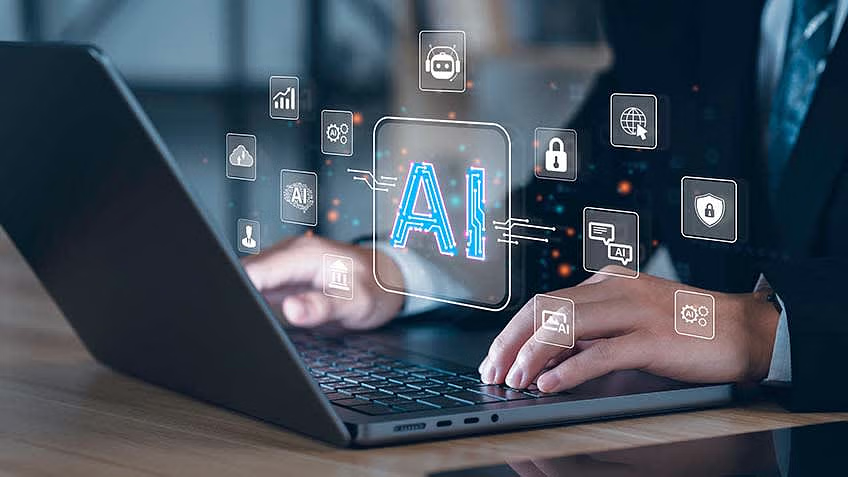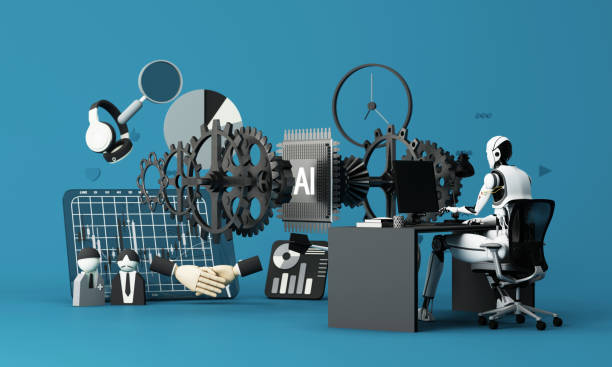AI Tools That Can Boost Your Team’s Productivity

In today’s competitive business landscape, teams face mounting pressure to deliver results faster while maintaining quality standards. The gap between expectations and capabilities continues to widen, creating workflow bottlenecks that impact both output and employee satisfaction. Fortunately, artificial intelligence has evolved from an experimental technology into a practical solution that transforms how we work. As we navigate 2025’s professional demands, AI tools aren’t just optional enhancements—they’ve become essential resources for teams seeking significant productivity gains without sacrificing creativity or quality.
The integration of AI across business functions represents more than just technological advancement; it offers a fundamental shift in how teams allocate time and resources. By automating repetitive tasks and enhancing human capabilities, these tools create space for strategic thinking and creative problem-solving—the uniquely human contributions that drive true innovation. This article explores specific AI-powered solutions that can dramatically improve efficiency across departments, helping your team work smarter rather than harder.
Smarter Marketing with AI-Powered SEO Tools
Content marketing and SEO remain critical components of digital strategy, but they’ve grown increasingly complex. Teams now face the challenge of producing high-volume, high-quality content while simultaneously monitoring performance metrics, analyzing competitors, and adapting to ever-changing search algorithms. This complexity often results in resource drain and diminishing returns—precisely the scenario where AI-powered SEO tools deliver extraordinary value.
Modern SEO optimization platforms leverage sophisticated algorithms to streamline the entire content creation process. The transformation begins with automated keyword research, where AI analyzes search patterns and user intent to identify opportunities that human researchers might miss. Rather than spending hours manually comparing search volumes and difficulty scores, marketers can focus on strategy development based on AI-generated insights. These platforms also perform comprehensive SERP analysis, evaluating top-ranking content to identify patterns in formatting, depth, and topic coverage that correlate with search success.
Perhaps most valuable is the emergence of AI-driven content optimization capabilities that evaluate draft content against top-performing competitors. These tools analyze factors like semantic relevance, topic coverage, readability, and keyword usage to generate specific improvement recommendations. Writers receive actionable guidance rather than vague suggestions, dramatically reducing the revision cycle while improving content performance.
Top productivity gains from SEO AI tools:
- Faster keyword clustering and strategy planning – AI tools automatically group related terms and identify content gaps, reducing research time by up to 80%
- Competitor tracking and instant recommendations – Continuous monitoring of competitor content with immediate actionable insights for outperforming them
- Real-time content scoring and optimization – Instant feedback during content creation rather than after publication, eliminating extensive revision cycles
The efficiency improvements from AI SEO assistants extend beyond time savings. These tools help teams maintain consistent content quality regardless of individual writer expertise, ensuring that every piece published meets established performance benchmarks. This standardization translates to more predictable results and better resource allocation across marketing initiatives.
Visual Content Creation: AI Tools for Image and Video Generation
Visual content has become non-negotiable for engagement across platforms, creating unprecedented demand for design resources. Traditional approaches—hiring more designers or outsourcing to agencies—often prove too costly or too slow for teams needing rapid content production. The emergence of AI image generation and video creation tools directly addresses this production bottleneck.
Today’s AI image generators have evolved far beyond basic capabilities, now creating sophisticated visuals from detailed text prompts. Marketing teams use these tools to produce social media graphics, blog illustrations, and advertising visuals without waiting for design resources. The technology interprets natural language descriptions and generates images that align with brand guidelines in seconds rather than days. This democratization of design capabilities means content creators can independently produce visuals that previously required specialized skills.
AI Visual Tool TypePrimary FunctionKey Productivity BenefitImage GeneratorsCreates custom visuals from text descriptionsEliminates design bottlenecks for content teamsVideo Creation PlatformsConverts text scripts into animated videosReduces video production time from weeks to hoursVisual Enhancement ToolsAutomatically improves existing images/videosMaintains quality while accelerating outputBrand Consistency EnginesEnsures all AI-generated visuals match guidelinesEliminates revision cycles for brand compliance
More teams are turning to AI tools like Jadve to generate visuals and videos without relying on full-time designers or editors. These platforms particularly excel at creating explainer videos, product demonstrations, and social media content that previously required video editing expertise. The technology converts text scripts into professional-looking videos complete with animations, transitions, and voiceovers.
The productivity implications extend beyond simply creating more content faster. These tools significantly reduce production costs while enabling teams to experiment with visual approaches that might prove too resource-intensive through traditional methods. Marketing teams can test multiple visual concepts simultaneously, analyze performance data, and quickly iterate based on audience response—dramatically accelerating the optimization process.
Integrating AI Tools Seamlessly Into Your Workflow

The transformative potential of AI tools remains theoretical until they’re effectively integrated into existing workflows. Many organizations struggle with this implementation phase, creating disconnected processes that generate friction rather than efficiency. Successful integration requires thoughtful consideration of how these tools complement human capabilities rather than simply automating isolated tasks.
Cross-functional task automation represents the foundation of effective AI integration. Rather than implementing separate tools for each department, forward-thinking organizations deploy platforms that connect workflows across teams. For example, when the content team publishes a new blog post, an AI system automatically generates social media captions, creates promotional graphics, and schedules distribution—without requiring manual handoffs between departments.
Creative collaboration tools powered by AI further enhance team efficiency by serving as centralized hubs where human creativity meets technological capability. These platforms maintain version histories, suggest improvements, and even generate alternative approaches based on established parameters. The result is a more fluid creative process where AI handles routine aspects while humans focus on strategic decisions and creative direction.
Practical ways to use AI tools across departments:
- Marketers use AI for ad creatives and SEO – Generating multiple ad variations and optimizing landing pages based on performance data
- Designers generate mockups and assets with AI – Creating initial concept designs that can be refined rather than building from scratch
- Sales teams create pitch videos using AI tools – Customizing presentation materials for specific prospects without design resources
- HR creates onboarding content with video AI – Developing consistent training materials that can be personalized for different roles
The key to successful integration lies in providing sufficient training and establishing clear guidelines for when and how to leverage AI capabilities. Teams need to understand both the potential and limitations of these tools to make appropriate usage decisions. Organizations that develop this balanced approach create sustainable productivity improvements rather than temporary efficiency gains.
Accessibility across departments ensures that AI benefits extend throughout the organization rather than remaining isolated in technical teams. Modern AI productivity platforms feature intuitive interfaces that don’t require coding knowledge or extensive technical training. This democratization means that marketing, sales, customer service, and other departments can independently leverage AI capabilities without creating bottlenecks or dependencies.
Conclusion: Boost Productivity Without Burning Out Your Team
The relentless push for increased productivity often comes at the expense of employee wellbeing, creating unsustainable cycles of burnout and turnover. AI productivity tools offer a different approach—they absorb the repetitive, time-consuming tasks that drain creative energy, allowing team members to focus on work that leverages uniquely human capabilities like strategic thinking, emotional intelligence, and creative problem-solving.
These tools don’t replace human workers; they amplify human potential by eliminating unnecessary friction and creating space for meaningful contribution. When implemented thoughtfully, AI solutions shift the workload balance toward activities that generate both better results and greater job satisfaction. This alignment produces sustainable productivity improvements rather than temporary efficiency gains that come at the cost of team morale.
Organizations new to AI implementation should start with targeted solutions addressing specific pain points rather than attempting comprehensive transformation. Begin with tools like Jadve that solve immediate challenges, measure the results, and gradually expand based on demonstrated success. This incremental approach builds both technical capability and organizational confidence while minimizing disruption.
The future of productivity isn’t about working harder or longer—it’s about making strategic technology choices that maximize human potential. The most successful teams will be those that thoughtfully integrate AI productivity tools into their workflows, creating environments where technology handles routine tasks while humans focus on creative and strategic contributions. By making the right AI choices today, organizations position themselves for sustainable success in an increasingly competitive business landscape.